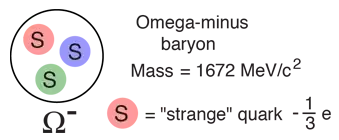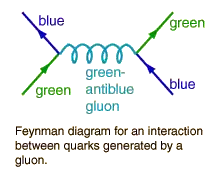We know color-neutral bound systems of quarks exist in the form of hadrons, we suspect color-neutral bound systems of gluons exist in the form of glueballs, we have a candidate particle which may be an hybrid meson bound to a gluon. My question is if there exists any configuration consisting of a single quark and an arbitrary number of gluons that results in a color-neutral system that could exist on its own, even if it would be unstable or would mix with other particle states. If the answer is no, why?
3 Answers
You can prove that this is impossible using Young tableaux. The trivial (color-neutral) representation 1 must have 3 boxes in each vertical column. (You can prove this to yourself using the hook-length formula.) A single quark in 3 contributes one box. A single gluon in 8 adds 3 boxes. Thus, no matter how you arrange the boxes from additional gluons, you can never form the 1 representation.
- 1,011
It boils down to whether one can make a color neutral particle with a quark and some colored gluons.
The rationale for the concept of color can be highlighted with the case of the omega-minus, a baryon composed of three strange quarks. Since quarks are fermions with spin 1/2, they must obey the Pauli exclusion principle and cannot exist in identical states. So with three strange quarks, the property which distinguishes them must be capable of at least three distinct values.
See also the evidence for three colors.
Now the gluons do not carry a single color
Gluon interactions are often represented by a Feynman diagram. Note that the gluon generates a color change for the quarks. The gluons are in fact considered to be bi-colored, carrying a unit of color and a unit of anti-color as suggested in the diagram
I do not think that the algebra of the existing model can model what you want. If it is a red quark it might be neutralized by a gluon carrying antired, but there would be left over the other color carried by the gluon. This would be true for combinations of gluons too, there would be left over color or anticolor, so color neutrality cannot be attained within QCD.
- 236,935
No. In general, in any (exotic) hadron made of valence quarks, antiquarks and gluons, the number of quarks minus the number of antiquarks in absolute value must be divisible by 3. Then, add any number of gluons. That's the recipe to form possible color singlets. See the introduction to:
- R. F. Lebed, R. E. Mitchell, E. S. Swanson, "Heavy-quark QCD exotica", Prog. Part. Nucl. Phys. 93 (2017) 143-194, arXiv:1610.04528.
- 2,724

